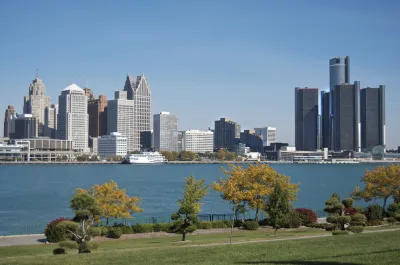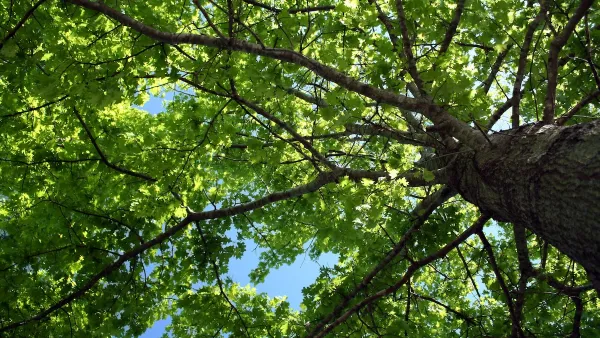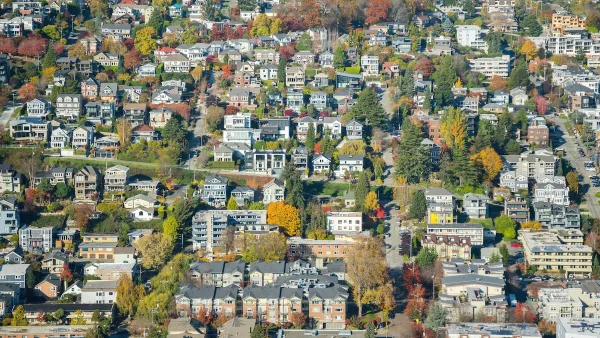A Detroit nonprofit has been planting trees in parts of the city with the lowest tree canopy.

Hadassah Patterson, writing in Next City, reports on a Detroit nonprofit that has been greening the city for over three decades. “The nonprofit has planted over 135,000 trees in the city since 1989, with an increasing focus on low-income or minority areas that were historically redlined. Trees currently cover nearly 23% of formerly redlined (grade D) neighborhoods compared to 43% of formerly greenlined (grade A) neighborhoods in 37 major U.S. cities.”
The article notes that “Greening of Detroit President Lionel Bradford says reforesting can help combat the higher emissions and hotter temperatures that come with urban areas.” According to Bradford, trees also soak up stormwater, preventing water backups that can foster mosquito infestations and other public health threats. “Greening of Detroit partners with the city to determine the best varieties of trees and locations for planting in neighborhoods and parks.”
The tree planting is just one part of Greening of Detroit’s mission. “In addition to employing community members and working with volunteers, Greening of Detroit runs two workforce development programs that are the backbone of their operations,” Patterson writes. “While Greening of Detroit has been working to increase funding streams from their own services, such as selling plants from its nursery, most of its funding comes from grants and donations from the government, foundations, corporations and individuals.”
FULL STORY: Detroit Nonprofit Is Turning Redlined Streets Green

National Parks Layoffs Will Cause Communities to Lose Billions
Thousands of essential park workers were laid off this week, just before the busy spring break season.

Retro-silient?: America’s First “Eco-burb,” The Woodlands Turns 50
A master-planned community north of Houston offers lessons on green infrastructure and resilient design, but falls short of its founder’s lofty affordability and walkability goals.

Delivering for America Plan Will Downgrade Mail Service in at Least 49.5 Percent of Zip Codes
Republican and Democrat lawmakers criticize the plan for its disproportionate negative impact on rural communities.

Test News Post 1
This is a summary

Test News Headline 46
Test for the image on the front page.

Balancing Bombs and Butterflies: How the National Guard Protects a Rare Species
The National Guard at Fort Indiantown Gap uses GIS technology and land management strategies to balance military training with conservation efforts, ensuring the survival of the rare eastern regal fritillary butterfly.
Urban Design for Planners 1: Software Tools
This six-course series explores essential urban design concepts using open source software and equips planners with the tools they need to participate fully in the urban design process.
Planning for Universal Design
Learn the tools for implementing Universal Design in planning regulations.
EMC Planning Group, Inc.
Planetizen
Planetizen
Mpact (formerly Rail~Volution)
Great Falls Development Authority, Inc.
HUDs Office of Policy Development and Research
NYU Wagner Graduate School of Public Service





























